It was not the election result Mark Carney’s team expected. On the morning of April 28, Braeden Caley, the Liberal national campaign’s co-director, told the Star he expected to win between 185 and 187 seats. Andrew Bevan, another campaign co-director, pegged the number at 181. Others guessed between 184 and 190. Carney’s close adviser, Gerald Butts predicted 183.
He was lowballing expectations. The Liberals’ modelling had been off in the last two elections, projecting 16 fewer seats in 2021 than the party ended up winning. This time, internal interactive voice response polls suggested Liberal support was higher than their own modelling suggested.
But when the results were finally counted, it wasn’t the red sweep the team expected.
The Liberals had won 169 seats, a few shy of the 172 needed for a majority.
This was also not the result the Conservatives, who held a 27-point lead in public support over the Liberals as recently as January, wanted. For more than a year, the Conservatives had led across all age groups, genders, education levels, and in all regions of the country except in Quebec, where they had been second to the Bloc Québécois. Eighty-eight per cent of Canadians were telling pollsters they wanted change.

Pierre Poilievre lost his seat in the House of Commons in the federal election a month ago.
Christinne Muschi/The Canadian PressSix months ago, after U.S. President Donald Trump was re-elected, the NDP and the Liberals were tied, according to polling from Abacus Data released the week of Nov. 20. Most Canadians expected the Conservatives to win the next election. And the vast majority of Conservative/Liberal switchers — 83 per cent — felt Conservative Leader Pierre Poilievre had the best chance of achieving positive outcomes for Canada vis-à-vis Trump.
“So far, there is no evidence that Trump’s victory should make Liberals feel better about their fortunes,” Abacus Data CEO David Coletto told the Star at the time.
This story, based on interviews with 106 political insiders, candidates and staff members, is an account of how all of that changed, how through mistakes and missed opportunities one side watched a near-certain victory slip from its grasp, while the other experienced a rebirth that propelled it from its political deathbed to a near majority government.
- Althia Raj
- Althia Raj
‘He blames Trump’
Ask any member of Mark Carney’s team and they will tell you that the Liberals won the 2025 election because of Carney: He was the right man, with the right skill set, at the right moment. And he did the work.
“We could have run the same campaign for another leader and it would have been a disaster,” Butts told the Star. “The thing that made this campaign successful was Mark. Like, that’s true. That is capital-T true.”
But would Carney have won without Trump back in the White House? Is there a candidate Carney without Trump?
Carney suggested several times on the campaign trail that he joined the contest to lead the Liberals in January because of the existential threat Canada faced. “I put my hand up because of the crisis,” he said in Windsor, Ont. on March 26.
“I knew that we needed big change, big change here in Canada,” he said at a rally in St. John’s on March 23. “Big change to fix our economy. Big change to fight Donald Trump’s tariffs.”
Carney’s ambition actually dates back decades, but he leaned into this moment — one that seemed not only designed for the Oxford-educated central banker, but that seemed also to disqualify his primary political opponent.
Poilievre believes he was defeated in this spring’s election because of Carney and Trump. “He blames Trump and Mark Carney being a shiny new bauble as the reasons why he lost,” said an insider, who spoke with the Conservative leader and was granted anonymity to speak candidly, like most who spoke to the Star for this story.
Trump made Poilievre’s path to the Prime Minister’s Office more difficult, in part, because Poilievre had tried to emulate some of Trump’s political strategy. His aggressive and irreverent language, the demonizing of political opponents, the dismissive nicknames, the spreading of misinformation, the culture wars, conspiracy theories, attacks against the mainstream media — even Poilievre’s rallies recalled Trump’s events.

In December, Donald Trump posted this photoshopped image on his Truth Social platform. The U.S. president has repeatedly mused about making Canada the 51st state.
Donald Trump via Truth SocialSo when Trump started threatening tariffs against Canada and musing about making it his country’s 51st state, it quickly became what Butts called the “central problem” for Poilievre. “When there’s a wolf at the door,” he noted, “you don’t want somebody running the house that really, really likes wolves.”
Were it not for Trump’s return to the White House, the result — and timing — of the 2025 federal election may have been quite different. Instead, Trump united Canadians with a renewed sense of pride, and Poilievre’s “Canada is broken” rhetoric was no longer what many of them wanted to hear.
“The stuff Pierre was saying for two years was fine,” said one of Poilievre’s Ontario MPs. “When Trudeau left, it became less fine. And when it could be compared to Trump, it became a real problem.”
In a series of ads, the Liberal Party of Canada was happy to remind Canadians of their similarities.
But Trump aside, there were other reasons why Poilievre lost what many on his team believe was an entirely winnable election.
One reason frequently cited by those around him was Poilievre himself.
“He lost because he’s a dick,” one of his advisers told the Star, a sentiment cited by other staffers and insiders.
“A lot of that traditional voter coalition, a lot of them were like, ’(MP’s name), I love you, I just can’t vote for you this time. I don’t like Pierre. I don’t like the tone … I just can’t vote for Pierre,’” recalled an Eastern Conservative MP. “I heard it more this time than ever before.”
But many on Poilievre’s team saw his tone as an asset. They believed his aggressiveness helped channel the anger felt by many young people, especially young men, and was a tool to use in making his cases against Trudeau, NDP Leader Jagmeet Singh and the carbon tax.
Some believe Poilievre’s tone wasn’t a problem when he was facing off against Trudeau, but it quickly became one with Carney.
“The public disliked Trudeau so much that it was easy for them to enjoy Pierre’s aggressive prosecution of Justin,” said one adviser. “But once Justin was gone, people would be like … ‘Hey, that guy is really not that nice … He’s kind of mean.’”
Others on the team believe the Conservatives — Poilievre included — “mistook the poll numbers for our own popularity, as opposed to disgust with Justin Trudeau,” which led to a series of strategic errors that Trudeau’s unpopularity had masked.
“We’ve made a ton of mistakes in the last two years — strategic mistakes, operational mistakes, media strategy, stuff like that — that we never got punished for because we had this ultimate piñata in Trudeau that no matter what we did, we kept going up in the polls and it didn’t seem to matter,” said another Poilievre adviser.
“It didn’t matter how many people we privately pissed off and how many we gave the cold shoulder to, how many we alienated. It didn’t seem to matter, but it did matter.”
Poilievre assumed he would lead the Conservatives to a crushing victory, and made few attempts to cultivate friends. Indeed, he often appeared more interested in making enemies.
Take the business community for example. In a speech to the C.D. Howe Institute in December 2023, Poilievre expressed disdain for Bay Street executives. A few months later, in a column for the National Post, he said he would refuse to meet with the Chamber of Commerce, the Business Council and Canadian Federation of Independent Business, and urged corporate Canada to fire its “useless and overpaid” lobbyists.
With potential political allies, Poilievre and his top adviser, Jenni Byrne, seemed more interested in levelling threats than in building bridges. During the election campaign, Doug Ford revealed that despite him being the premier of the country’s most populous province since 2018, and Poilievre being the federal Conservative leader since 2022, the two only spoke for the first time this past March. Nova Scotia Premier Tim Houston’s office let it be known that after Houston tried to distance himself from the federal party during his province’s fall election campaign, Byrne had warned that the transgression would not be forgotten.
Those stories came as no surprise to Poilievre’s MPs, who have been gagged for the past two years: barred from speaking to journalists, participating on television panels, taking part in parliamentary travel or fulfilling their duties as they see fit in Parliament.
Caucus morale has taken a beating. One often repeated tale involves a now former MP who was given permission to attend a parliamentary association trip, and flew a few days earlier to visit his daughter. Once there, he was told Poilievre’s office had changed its mind, his permission for the trip was rescinded, and he had to return home immediately. He was also left personally on the hook for the total value of the trip — some $12,000.
If Poilievre treated his backbenchers poorly, he could be equally dismissive of the party’s grassroots members. Across the country, long-time Conservative activists complained about rules being ignored, candidates being unfairly disqualified from nomination contests, or of being told there would be no nomination race in their riding at all.
According to the anti-abortion group Campaign Life Coalition, at least 110 Conservative nomination races were cancelled in favour of appointed candidates. “The Red Tory swamp in (Poilievre’s) office has no respect for democracy whatsoever,” charged Jack Fonseca, the group’s director of political operations.
As Poilievre’s spokesman Sebastian Skamski declared during a campaign rally in Vaughan, Ont., as he tried to prevent journalists from speaking to attendees, “It’s our way or the highway.”
Although they parachuted candidates into ridings, the Conservatives did not build or promote an all-star team around Poilievre. They didn’t recruit big names to bolster their leader’s weaknesses, despite his high negatives in public opinion polls. Instead, the party leaned into its leader. Voters, they believed, were attracted to the Conservative party because Poilievre was its primary asset.
Until he wasn’t.
But these mistakes were made before Carney arrived. More would be made later.
‘I’ll do whatever I can’
Carney’s journey to the Prime Minister’s Office might have begun in the summer of 2012 when, while serving as governor of the Bank of Canada, he was courted to run for the Liberal leadership. Or, perhaps it began that year, when Conservative prime minister Stephen Harper asked Carney to become his finance minister. Or perhaps it began in 2015, when he was approached to run for the Liberals under Trudeau. Or perhaps it began in the summer of 2020, when he returned to Canada after a stint as governor of the Bank of England and Trudeau sought to have him replace then-finance minister Bill Morneau.
Or maybe it only really began when Carney publicly declared himself a Liberal in April 2021. “I’ll do whatever I can to support the Liberal party in our efforts to build a better future for Canadians,” he told delegates at the party’s convention that year.
The Conservatives saw Carney as a future threat. A month after Carney outed himself as a Liberal, Poilievre — not yet the Conservative leader — hounded the then-vice-chair of Brookfield Asset Management during a Parliamentary committee hearing.

In 2012, while serving as governor of the Bank of Canada, Mark Carney was first approached about running for the Liberal leadership.
Sean Kilpatrick/The Canadian Press file photoMeanwhile, as the Trudeau government’s popularity plummeted, interest in Carney rose.
In May 2022, Carney joined Canada 2020, a progressive think tank then headed by Caley, a former Liberal spokesman, and co-founded by Liberal strategist Thomas Pitfield. Carney started using its platform to draw a contrast between how Trudeau governed and how he would, if given the chance.
In the fall of 2023, he publicly criticized the Trudeau government’s decision to suspend the carbon price on heating oil. “I would have looked for other ways to provide that support than the route chosen,” he told the audience of the think tank’s “Net-Zero Leadership Summit.”
In April, Carney headlined “economic lookahead dinners” in Ottawa and in Toronto under the Canada 2020 banner. His speech was titled “A Time to Build” — the theme of his 2025 leadership campaign. Curious onlookers, including several Liberal MPs, showed up to hear him speak. Meanwhile, the Conservatives, who had started to brand him “Carbon Tax Carney,” were trying to drag him back before a parliamentary committee.
Later that spring, Carney and Trudeau talked again about him joining the cabinet, but discussions fell apart. One adviser suggested a leak, presumed to be from Trudeau’s office, destroyed trust on the Carney side. A second adviser suggested that neither side seemed fully committed to the idea. A third disagreed. “His heart was there,” they said. “That’s the kind of thing about Mark … He’s always been honest about his intentions.”
By the summer, Carney was strategizing his next moves. While it wasn’t clear how or when he would have the chance to become Liberal leader, he was already thinking about how he would position himself to make a break with Trudeau, what he would run on, and when he would call an election. That call would need to come quickly — before current events or a multimillion-dollar Conservative ad campaign could define him.
In June, it was decided that if Carney became leader, he would have to scrap the carbon tax, after polling confirmed that its unpopularity was unsurmountable. It would be quite a reversal for the man who, as the United Nations’ special envoy on climate action and finance, had called on all countries to put a price on carbon.
By the end of August, Carney had decided not to join Trudeau’s cabinet. Instead, he agreed to become the chair of the ”Leader’s Task Force on Economic Growth.” The goal was to signal to Liberals that Carney was committed to the party, and that he wanted to see the Trudeau government succeed — despite all the will-he-won’t-he-join news stories.
His appointment was announced on Sept. 9. He was invited to attend a Liberal caucus meeting in Nanaimo, where Trudeau’s office expected tough conversation about the prime minister’s ability to stay on. The reception wasn’t entirely warm. If Carney had hoped his appearance would spur a successful Liberal revolt, it would take longer to happen.
In hindsight, Carney’s association with Trudeau as chair of this task force — which was never truly formed, resulted in no report, and included only a handful of outside meetings with stakeholders — was a strategic mistake.
But he would flirt with closeness to Trudeau again.

Mark Carney’s connections to Justin Trudeau’s government and its policies dogged his campaign.
Sean Kilpatrick/The Canadian PressIn the wake of Trump’s re-election and the Liberals’ declining poll numbers, Trudeau and his chief of staff, Katie Telford, dreamed up an “Avengers”-like wartime unity cabinet. They envisaged big names: former Quebec premier Jean Charest, former B.C. premier Christy Clark, former Alberta premier Rachel Notley, former Nova Scotia premier Steve MacNeil and, of course, the former Bank of Canada governor.
As discussions wore on, the circle of people willing to join Trudeau’s team got smaller and smaller. “It was quickly becoming sort of only Mark,” said one source.
Their exploratory talks, however, had become quite detailed. Carney was offered a Canada-U.S. cabinet portfolio. He declined. Then he was offered the finance minister’s job.
What happened next depends on who you ask.
Two sources close to Carney insist that “Mark had not given any sort of final agreement to that.”
But Trudeau felt confident enough that Carney was joining his team that he told Chrystia Freeland in a Zoom call that he was removing her as finance minister.
Three days later, on Dec. 16, Freeland resigned from cabinet, posting a scathing letter on social media just hours before she was set to table the government’s fall economic statement. The same day, Carney told Trudeau he was out. “He would not be joining the government at that time,” said a source. This was not what he had bargained for.
See my letter to the Prime Minister below // Veuillez trouver ma lettre au Premier ministre ci-dessous pic.twitter.com/NMMMcXUh7A
— Chrystia Freeland (@cafreeland) December 16, 2024
Frustrated Liberal MPs, who hoped their leader would resign in the fall, felt their rebellion had new legs.
They were right.
‘We had no idea what to do’
On Jan. 6, 2025, Trudeau announced he would step down as prime minister and called on the Liberal party to hold a leadership contest to replace him.
Despite the fact that Poilievre had referred to Carney in the House of Commons as the “incoming leader of the Liberal party,” the news came as a shock to many around the Conservative leader.
“I thought, there’s no way this guy’s going. He wants the fight with Pierre. He thinks he can win the fight with Pierre, you know, kind of like how Harper was in 2015,” said one Conservative MP.
Poilievre had defeated Trudeau without an election — but now his campaign plan was out the window.
“Trudeau is in many ways like a safety blanket for us,” said one member of Poilievre’s team, “but when we lost it, we had no idea what to do.”

Prime Minister Justin Trudeau announces his resignation as Liberal leader and prime minister outside Rideau Cottage in Ottawa on Jan. 6, 2025.
Sean Kilpatrick/The Canadian PressFor more than two years, Poilievre had planned to campaign against a decade-old Liberal government led by an unpopular prime minister, one Conservatives framed as divisive and out of touch, who was not only unconcerned by the financial struggles of everyday Canadians but was actively working against their interests.
The key plank of that strategy was a pledge to get rid of Trudeau’s controversial “carbon tax.”
As Poilievre worked to grow the Conservative tent, he held “axe the tax” rallies across the country. In speeches, he pinned the blame for the rising cost of living on the carbon tax. Scrap it, Poilievre argued, and “production and jobs” would return. By arguing that doing so would make everyone richer, he was making a case that the Liberals wanted to make everyone poorer.
As the price on carbon increased, and provinces abandoned their own carbon pricing programs to adopt the federal surcharge, Poilievre’s message penetrated further. Over the summer of 2023, as Newfoundland and Labrador, Prince Edward Island and Nova Scotia joined the federal program, the Liberals saw their 37-point lead in public support evaporate in Atlantic Canada. By the end of August, they were trailing the Conservatives by seven points.
The “axe the tax” rallies not only provided a contrast between Trudeau and Poilievre, but also offered the Conservatives a chance to connect with hundreds of thousands of new voters. After the rallies, Poilievre would stick around, often for hours, posing for photos and hearing firsthand from Canadians about what mattered to them: rising auto thefts, young adults unable to move out of their parents’ basements, mothers whose children had overdosed on opioids. Poilievre would stay until the last person in line had met him. All the while, his party gathered valuable information about their new voter coalition.

Conservative Leader Pierre Poilievre held “axe the tax” rallies across the country.
Nathan Denette/The Canadian Press file photoPoilievre was building a movement. Like his trusted adviser Byrne, who strongly believed that his predecessor Erin O’Toole had veered too far toward the political centre, he believed an election campaign could be won from the right. He would unapologetically appeal to disciples of the so-called “Freedom Convoy” and supporters of the People’s Party of Canada, but also tell other cohorts of Canadians — young people, members of private sector-unions, immigrants — that their values were Conservative values, that their issues were Conservative issues.
While much of Poilievre’s outreach toward young people happened online, caucus members were tasked with reaching out to voting blocks that had long been ignored by the party and assumed to be in the opposition camps. Conservative co-deputy leader Tim Uppal and finance critic Jasraj Singh Hallan made an aggressive push for the South Asian vote in the GTA’s seat-rich Peel Region and in B.C.‘s lower mainland. In union halls across the country, labour critic Kyle Seeback tried to reset the party’s contentious relationship with organized labour.
Like the U.S. Republican party and the Progressive Conservative party in Ontario, Poilievre courted working-class Canadians. In the spring of 2024, he spoke to the Canadian Building Trades Union conference, but received a cool reception. After that, Poilievre heeded advice that he needed to course correct; that if he didn’t disavow his past support for anti-union bills and right-to-work laws, he would not make any inroads with the unions.
In September, Poilievre sent the National Post a statement saying his thinking had evolved after visits to workshops, factories, union halls and training centres. “A common sense Conservative government will not introduce or pass (anti-union bills) C-377, C-525 or right-to-work laws. Period,” he pledged. “This commitment will be written in my election platform.” And it was — even though support for right-to-work legislation remains part of the Conservatives’ policy book.
It was a breakthrough the party needed. While some labour groups shied away — the Canadian Labour Congress and Public Service Alliance of Canada, for example — the construction, building trades and some private-sector unions started to see Poilievre as an ally.
That new relationship would prove crucial during the election campaign. There would be no powerful union-backed third-party groups lobbying to defeat Poilievre. And there would be waves of new supporters.
‘Competitions create better competitors’
Before Carney could win the Liberal leadership, he needed a chance to compete for it.
Even before the party’s Atlantic and Ontario caucuses concluded Trudeau should go, or the NDP announced it would vote to topple the government when Parliament resumed, allies of Freeland and intergovernmental affairs minister Dominic LeBlanc were lobbying to have one of them appointed as interim leader.
Eddie Goldenberg, former prime minister Jean Chrétien’s right-hand man, publicly called for the party’s executive to bypass a leadership convention and allow the caucus to select the new leader, urging them to pick Freeland as the best choice to face Trump.

Before the Liberals decided to hold a Liberal leadership contest, Chrystia Freeland was seen as a top contenders.
Christinne Muschi The Canadian PCaley, who would later serve as co-director of Carney’s campaign, was on the phone for hours each day, trying to determine how the party could manoeuvre to hold a leadership race. He and Butts called national board members and Liberals across the country, making the case privately that having a race was not only possible but necessary for the renewal of the party.
Publicly, however, calls mounted to hand the leadership over to somebody who was already in the Liberal caucus. Chandra Arya, the three-term MP for Nepean (who was later disqualified from seeking re-election in the riding where Carney would go on to run and win) told CBC on Dec. 20, that Freeland appeared “to be the person around whom the caucus members can rally.”
On Dec. 27, Butts tried to stamp down those efforts. “If you want to know who can play hockey, put on a hockey game,” he wrote on Substack. “It doesn’t matter who you think you support at this moment, we’ll all have a more seasoned view if we see these people in live action. Competitions create better competitors. In politics, leadership campaigns make for better general election campaign teams. They train people, test ideas, build resilience.”
By then, Carney was already building his team.
At the time, however, winning the Liberal leadership didn’t look like much of a prize. On Dec. 30, Angus Reid polling had support among decided and leaning Liberal voters at 16 per cent — lower than the party’s worst electoral showing in 2011 when then-leader Michael Ignatieff won just 18.9 per cent of votes cast.
Three days after Trudeau announced his intention to resign, the Liberal party announced on Jan. 9 that it would hold an expedited leadership race.
Four days later, Carney soft-launched his campaign on the American TV program “The Daily Show.” Caley had reached out to the show months earlier, and was planning to reconnect when its producers reached out to him; the timing was “fortuitous.”
Mark Carney, Canadian economist and former Governor of the Bank of Canada and Bank of England, chats with Jon Stewart about his country’s response to Donald Trump’s desire to annex Canada: “It’s not going to happen.”
The Daily Show appearance helped boost Carney’s profile and led to more caucus endorsements.
Within days, former B.C. premier Clark announced she was bowing out of the contest. Most of the other likely contenders — François-Philippe Champagne, Anita Anand, Mélanie Joly and LeBlanc — also took a pass.
Two sources suggested Carney’s team had acted quickly to sweep up key organizers across the country. Another suggested those potential leadership rivals had simply misjudged.
“A lot of people thought (Carney) was going to lose (the election), that (Poilievre) would win a minority, that there would be a leadership review and (Carney) would leave and go back to Brookfield, and that there would be another leadership race,” the adviser, who spoke to the different camps at the time, concluded. “They just miscalculated.”
With most top contenders out of the race, the risk declined of a challenger rising through second-ballot support, and Carney’s chances of clinching the leadership seemed certain.
At a gathering for Liberal MPs in Ottawa on Jan. 23, Carney told his supporters and those still sitting on the fence that he wasn’t in the race just to win the leadership. He was there to win the coming election.
‘Carney destroyed the argument’
Poilievre was advised in mid-January that Carney would not be Trudeau, and that he needed to prepare for the possibility that a new Liberal leader would promise to scrap the carbon tax and take the Conservatives’ strongest policy argument away from them.
He didn’t listen.
On Jan. 16, the day Carney launched his leadership bid in Edmonton, the Conservative party released an ad branding him ”Carbon Tax Carney.”
“We had a six-week window prior to the election, during the leadership race, where we had basically unlimited money and resources to brand Carney as something,” said one strategist on the team. “We spent a lot of money, a lot of time, trying to brand him as “Carbon Tax Carney” and with the swish of a hand, Carney destroyed the argument.
“Of all the strategic mistakes we made, that was the biggest.”
It was a costly error, and one that another strategist believes the team should have seen looming.
“Here’s an issue your opponents have been whacking you over the head with for the past two years to great success — let’s take that issue off the table,” that strategist said of Carney’s Jan. 31 announcement that he, like Poilievre, would get rid of the carbon tax.
“Carney, as a new political leader, could basically go anywhere he wanted. We weren’t prepared for it, but it wasn’t unexpected.”
As Poilievre’s team struggled to define Carney, the ground shifted underneath it.
“We didn’t know exactly what things were going to look like until Donald Trump was sworn in,” one member of the team said. “I remember sitting in the office and we were all just crowded around watching his speech, waiting to hear if he was going to mention tariffs or not.
“We were all very, very excited when he didn’t mention tariffs on Canada or the 51st state or any of that.”
It was a short reprieve.
Hours later, Trump mused in the Oval Office about slapping 25 per cent tariffs on imported goods from Canada and Mexico. “I think we will do it on Feb. 1,” he told reporters.
- Althia Raj
- Althia Raj
Error! Sorry, there was an error processing your request.
There was a problem with the recaptcha. Please try again.
You may unsubscribe at any time. By signing up, you agree to our terms of use and privacy policy. This site is protected by reCAPTCHA and the Google privacy policy and terms of service apply.
Want more of the latest from us? Sign up for more at our newsletter page.


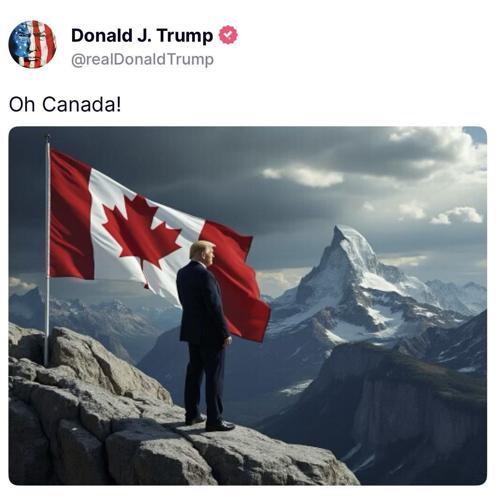
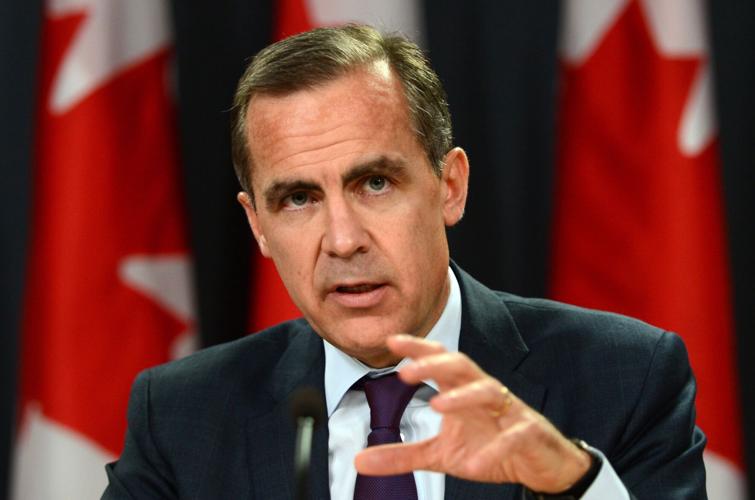
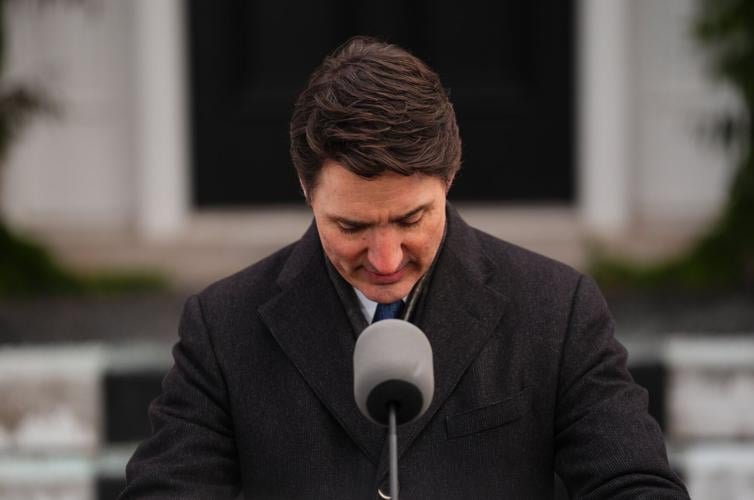
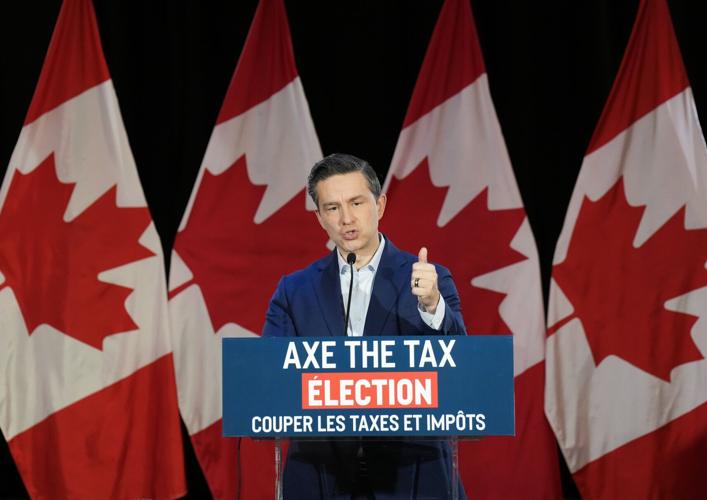
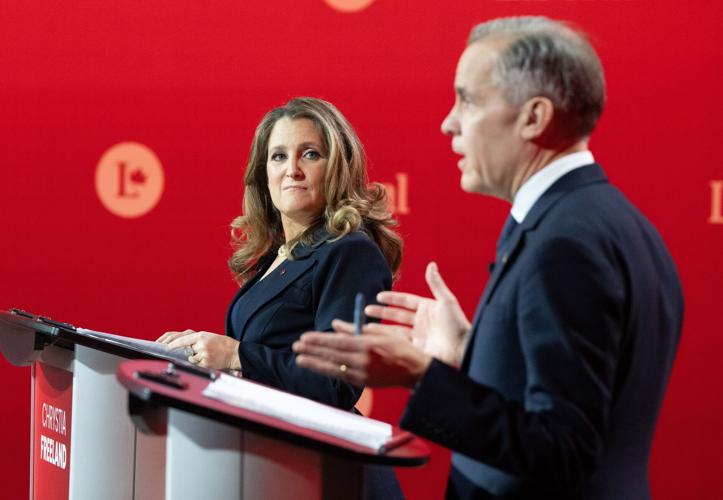





























To join the conversation set a first and last name in your user profile.
Sign in or register for free to join the Conversation